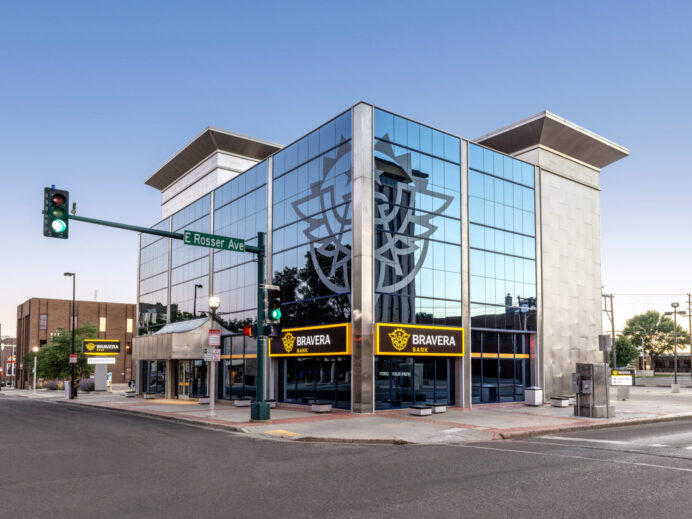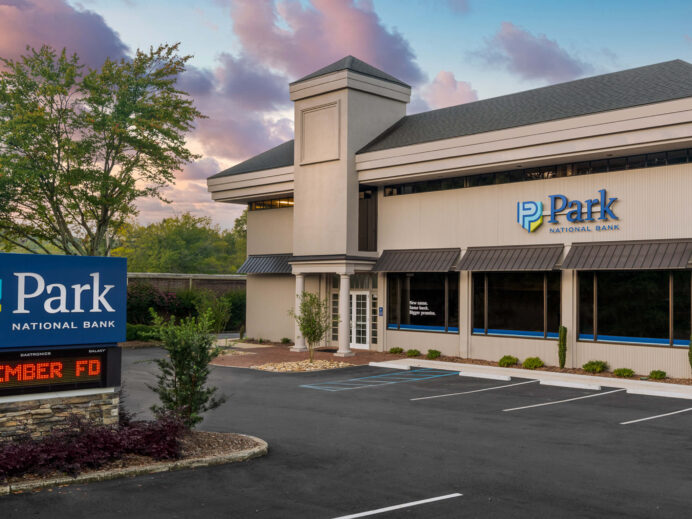In her recent keynote “Smarter Branching: How to Maximize the Branch Channel for Growth” at Future Branches in Boson, Gina Bleedorn discussed the indispensable role of the branch in building lasting banking relationships, a place where consumers – especially Millennials and Gen Z – turn to get valuable financial advice. And while the pandemic surely saw a rise in remote and digital channel usage by consumers, something more curious occurred during COVID. “One interesting thing that happened during the pandemic [was that] it didn’t kill branches,” Gina Bleedorn says. “It actually brought about a Renaissance in their usage instead.”
In fact, Raddon research backs that up, finding that monthly branch visits went up eight percentage points, from 69% in 2019 to 77% in 2020, a figure that has been holding steady for more than two years. But are those branches serving up experiences consumers want with the efficiency the financial institution needs? Raddon puts it this way: “The pandemic has pointed consumers back toward the branches and put pressure on institutions to offer service that is both high-tech and high-touch.” What consumers want is both/and: efficient transactions and valuable advice at the point of need. But what banks need is a roadmap to get there.
Watch the On-Demand Webinar “Smarter Branching: How to Maximize the Branch Channel for Growth” here:
What to Do
The bank branch has evolved as technology has progressed, but as we all know, many financial institutions are behind the eight ball in transforming their networks. The reality is that banks must consider a range of actions to take at once, saving and growing simultaneously. The “North Star” approach enables a financial institution to move toward its ideal experience, optimizing the network. Actions across the network include: Close, Relocate, Refresh, Renovate, and Expand. Importantly, closure doesn’t have to mean exiting the market. Leave-behind strategies include deploying formats like ITMs and microbranches to maintain market presence.
While every financial institution has to make their own decisions about their branching strategy and formats, small and mighty branches show you don’t need a massive retail location to make an impression. “There’s a new North Star: It’s beautiful and small,” says Gina Bleedorn. “Realistically, your full-service branches don’t need to be much more than 2,500 square feet.” Even more, ITMs and video enablement are changing the game for efficiency. “Look at an enhanced drive up, a mobile branch on wheels, and an ITM only. These are a North Star strategy, extended across multiple format types and self-service technology.”
Steps to transform the branch network:
Leveraging data to know where there’s opportunity is a crucial part of analyzing where to save and where to go and grow. “We’ve talked in the past about data, make sure in your analysis, you have good market data, competitive data, your own data, and mobility data,” says Gina Bleedorn. “But don’t get into analysis paralysis.” As banks put together strategies for evolving the branch network, they should focus on what really matters – like where there are opportunities, what’s going on in current and target expansion markets and how an institution’s performance stack up against their competition.
Plan: for expansion, create a roadmap for not just where but when and what
In planning, FIs should think about potential actions as a matrix of opportunity versus their current state. Banks should ask: where do I invest, where do I change, and where do I maintain? “I may have cash cows that I think are killing it, but there’s not actually that much opportunity in the market,” says Gina Bleedorn. “Come up with a branch-by-branch plan and team up with partner that can help you, because the process can become overwhelming very quickly.” Typical branch planning should incorporate current state and future state modeling, and planning should be about five years out with annual mini-plans incorporated within.
Pilot: designing, prototyping and piloting new ‘North Star’ experiences set the transformation foundation
In piloting, banks can start designing or iterating on an existing design. “Most of you have something you probably consider a branch of the future or a new branch design,” says Gina Bleedorn. “But you can’t push branch updates like app updates.” Iterative design is critical, because implementation takes time. “By the time you stop designing something, it’s already a year old by the time it gets in the ground.” After piloting, the design process leads into the ideal experience that can scale up and down – from a flagship down to an ITM only. “Demonstrating all the different ways a brand manifests itself.”
Extend: newly designed experiences can scale up to flagships and down to self-service
To request a copy of Gina’s presentation on transforming the branch banking channel or to speak with one of our branch experts, contact us at info@adrenalinex.com. Be sure to also stay tuned in to Believe in Banking as it highlights industry information and insights for banking leaders and Adrenaline’s Insights channel featuring banking and credit union strategies for success.
Adrenaline is an experience design agency that creates and implements end-to-end branded experiences through creative and environmental design. We enhance our clients’ customer experiences across digital and physical channels, from their branding and advertising to design and technology in their spaces. After transforming an organization’s brand, Adrenaline extends it across all touchpoints — from employees to the market to in-store environments. And, we focus on serving industries that sell human experiences including financial, healthcare, sports and entertainment.








